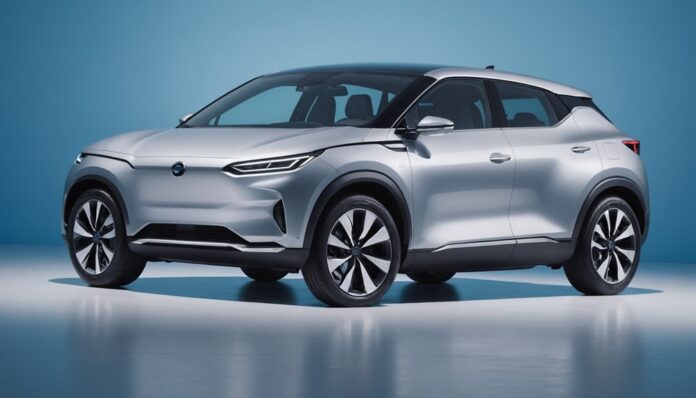The 2025 compact car market is defined by enhanced safety features that reflect significant advancements in automotive technology. Driver assist systems, such as adaptive cruise control and lane-keeping assist, have become increasingly sophisticated. Next-gen airbag technology and impact-absorbing materials are integrated into vehicle designs to maximize protection. These developments have contributed to improved crash testing standards. As the industry continues to evolve, one question remains: what other safety innovations can be expected in these vehicles?
Highlights
- 2025 compact cars feature advanced driver assist systems, including adaptive cruise control, lane keeping assist, and smart visibility features.
- Impact-absorbing materials and design enhance safety in compact cars, with strategically designed crumple zones and high-strength steel frames.
- Enhanced crash testing standards have driven innovation in safety feature design, with many 2025 compact cars achieving perfect 5-star ratings.
- Next-gen airbag technology integrates advanced sensors for precise deployment based on occupant position and crash severity.
- Smart visibility and alert features, including adaptive headlights and blind spot monitoring systems, support safer driving and prevent accidents.
Advances in Driver Assist Systems
Notable improvements in driver assist systems are a hallmark of 2025 compact cars. These advancements aim to enhance safety and convenience for drivers.
One key feature is adaptive cruise control, which enables vehicles to maintain a safe distance from the preceding vehicle and adjust speed accordingly.
Another significant development is lane keeping assist, which helps prevent drifting into adjacent lanes.
These features employ a combination of cameras, sensors, and software to monitor the vehicle’s surroundings and make adjustments in real-time.
By integrating these technologies, 2025 compact cars provide drivers with an added layer of protection and support on the road.
The widespread adoption of these features reflects a commitment to prioritizing driver safety and well-being.
Impact-Absorbing Materials and Design
The incorporation of advanced materials and innovative design elements plays an essential role in enhancing the safety of 2025 compact cars.
Modern vehicles now feature strategically designed crumple zones, which effectively absorb and distribute the forces of an impact, minimizing damage to the passenger compartment.
Additionally, reinforced structures, such as high-strength steel frames, provide added protection by maintaining the vehicle’s integrity in the event of a collision.
These advancements have greatly improved the ability of compact cars to absorb and redirect crash forces, reducing the risk of injury to occupants.
Enhanced Crash Testing Standards
As the automotive industry continues to prioritize safety, enhanced crash testing standards have become a crucial aspect of evaluating the performance of 2025 compact cars.
Manufacturers are now subject to more rigorous crash test methodologies, which assess a vehicle’s ability to withstand various types of collisions. The results of these tests are used to determine safety performance ratings, providing consumers with significant information to inform their purchasing decisions.
In 2025, compact cars are being held to the highest standards yet, with many models boasting perfect 5-star ratings.
The implementation of enhanced crash testing standards has driven innovation in safety feature design, leading to the development of more effective protective systems and a reduction in road fatalities.
Next-Gen Airbag Technology
Building on the advancements in crash testing standards, 2025 compact cars are also at the forefront of next-gen airbag technology.
This innovative feature employs advanced sensor integration to detect the presence and position of occupants, enabling more precise airbag deployment. Multiple airbags, including knee and side airbags, are strategically placed throughout the vehicle to minimize injury risk in the event of a collision.
Next-gen airbags can also adapt to the severity of the crash, deploying accordingly to provide ideal protection. Moreover, advanced sensors and cameras work in tandem to detect potential collisions and pre-emptively prepare airbags for deployment, further enhancing the safety of occupants.
This state-of-the-art technology solidifies 2025 compact cars as leaders in automotive safety.
Smart Visibility and Alert Features
How do 2025 compact cars improve visibility and situational awareness for drivers? One key feature is the use of adaptive headlights. These advanced headlights adjust their beam pattern to match the steering angle and speed of the vehicle, providing improved illumination of the road ahead.
Additionally, many 2025 compact cars come equipped with blind spot monitoring systems. These systems use sensors to detect vehicles in the blind spot and alert the driver through a visual or auditory warning. This feature helps to prevent accidents caused by lane changes or merging.
Conclusion
The 2025 compact cars showcase notable advancements in safety features, prioritizing driver and passenger protection. With innovations like adaptive cruise control, next-gen airbag technology, and smart visibility features, these vehicles set a new standard for road safety. Enhanced crash testing standards and impact-absorbing materials also contribute to their safety profile. Overall, the integration of state-of-the-art technologies makes these compact cars leaders in automotive safety, providing a secure driving experience for all occupants.


